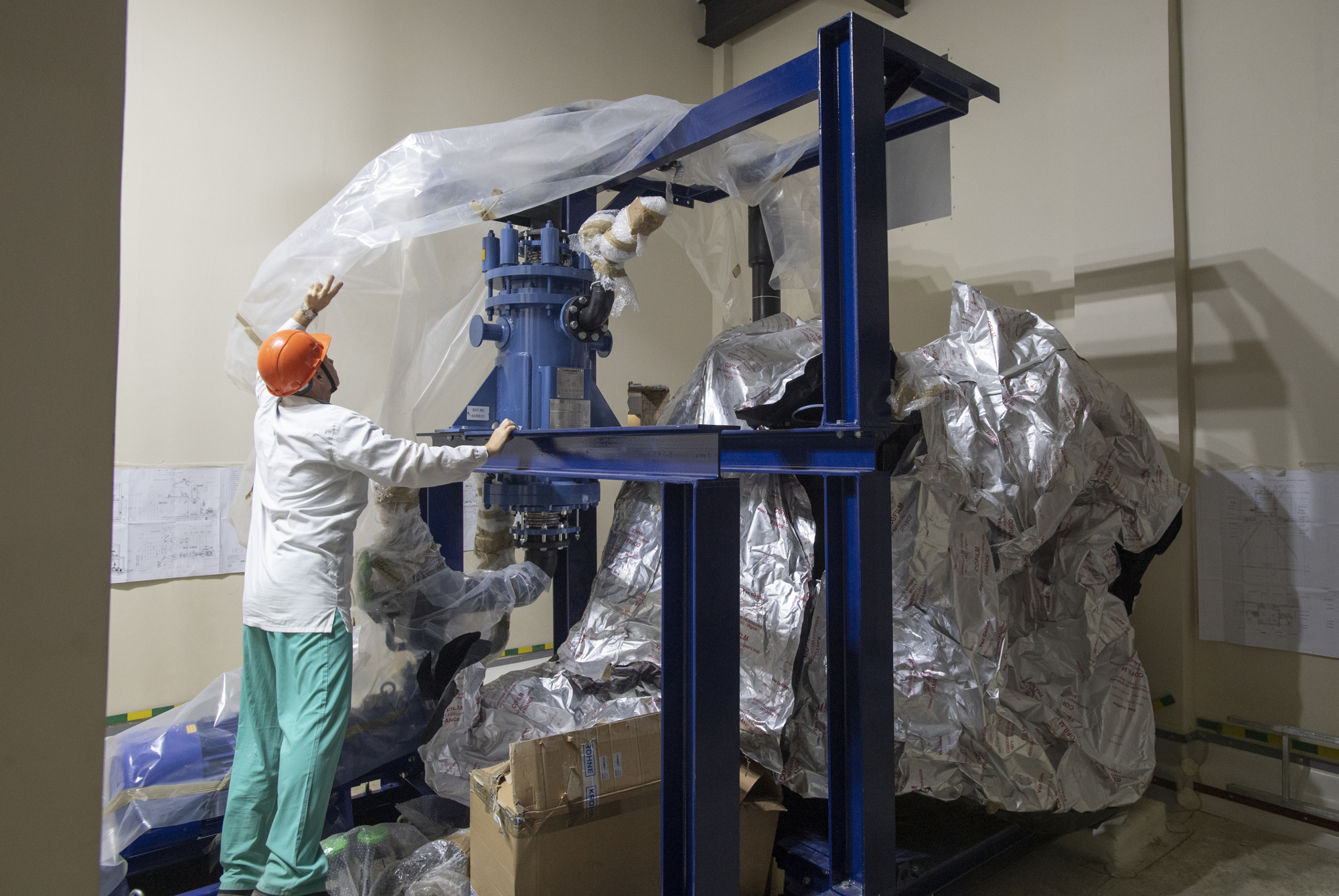 Russia’s Electrochemical Plant (ECP – part of the Rosatom Fuel Company TVEL) has begun installation of second plant (W2-ECP) for the processing of depleted uranium hexafluoride (DUHF)) in Zelenogorsk, Krasnoyarsk Territory). ECP produces low-enriched uranium for NPP fuel assemblies, stable and radioactive isotopes of various chemical elements, and a number of other high-tech products.
Russia’s Electrochemical Plant (ECP – part of the Rosatom Fuel Company TVEL) has begun installation of second plant (W2-ECP) for the processing of depleted uranium hexafluoride (DUHF)) in Zelenogorsk, Krasnoyarsk Territory). ECP produces low-enriched uranium for NPP fuel assemblies, stable and radioactive isotopes of various chemical elements, and a number of other high-tech products.
Installation of W2-ECP is part of Rosatom’s Programme for the Safe Handling of DUHF. Commissioning of the plant will prevent the accumulation of DUHF, an unstable waste product of uranium enrichment. The plant converts DUHF into the more stable uranium oxide- through a process of defluorination. Uranium oxide can be stored for a long time in open areas without environmental risks in the form of a powder and is also completely safe for transportation.
Depleted uranium oxide is also a raw material for the production mixed oxide (MOX) fuel for fast neutron reactors and is already used in the sodium-cooled BN-800 reactor at the Beloyarsk NPP. It is also a component of dense uranium-plutonium nitride (SNUP) fuel, which will operate the Brest-OD-300 lead-cooled fast reactor, which is being built in Seversk, Tomsk Region.
In addition, fluorine-containing products resulting from the defluorination of DUHF – hydrofluoric (hydrofluoric) acid and anhydrous hydrogen fluoride – are sold on the market as chemical products and are used both in the nuclear and other industries. In 2022, more than RUB400m ($4.1m) worth of hydrofluoric products were delivered to customers.
Work is being carried out simultaneously at all areas of the new facility. On the first floors of the already erected buildings, the electrical installation is underway. The main equipment has already been installed in the building of the hydrofluoric acid processing unit. Acid will be supplied to this section from the DUHF defluorination unit, which is being built nearby – construction work is also ongoing there and installation of the main equipment – furnaces and reactors – is scheduled for the end of 2023.
The launch of W2-ECP will double the ECP's DUHF processing capacity from 10,000 to 20,000 tonnes a year. The equipment is being supplied by France’s Orano Projets, which also supplied ECP’s first DUHF processing plane, W-ECP, which began operation in 2009. The W-ECP plant was supplied under a contract signed in 2005. The original 5,000-tonne-a-year capacity was increased to 10,000 tonnes in 2011.
The contract for W2-ECP was signed at the end of 2019. The first 16 trucks, which arrived from France to Eastern Siberia, contained complex equipment for power supply, instrumentation equipment, ventilation and parts of technological pipelines. The main equipment was delivered in 2022. After construction of the facility building, Russian and French specialists began joint installation of technological equipment.
The aim of Rosatom’s DUHF programme is to ensure the safe handling of depleted uranium, to slow the rate of accumulation and eventually to phase out all stocks accumulated at Russian enrichment enterprises. It is planned to increase DUHF processing capacity at other TVEL enterprises. From 2027-2028, with the commissioning at two similar facilities at the Urals ElectroChemical Combine (UECC) in Novouralsk with a capacity of 20,000 tonnes a year there will be a systematic decrease in the volume of DUHF stockpiles with the aim of eliminating them by 2035.
Other facilities, based on Russian technology, are planned for the Angarsk ElectroChemical Combine (AECC) and the Siberian Chemical Combine (SCC) in 2038. The completion of the entire programme is planned for 2057, eliminating stockpiles at all TVEL’s enrichment sites.
Image: A worker unpacks equipment ready for installation at the W2-EPC plant (courtesy of TVEL)






